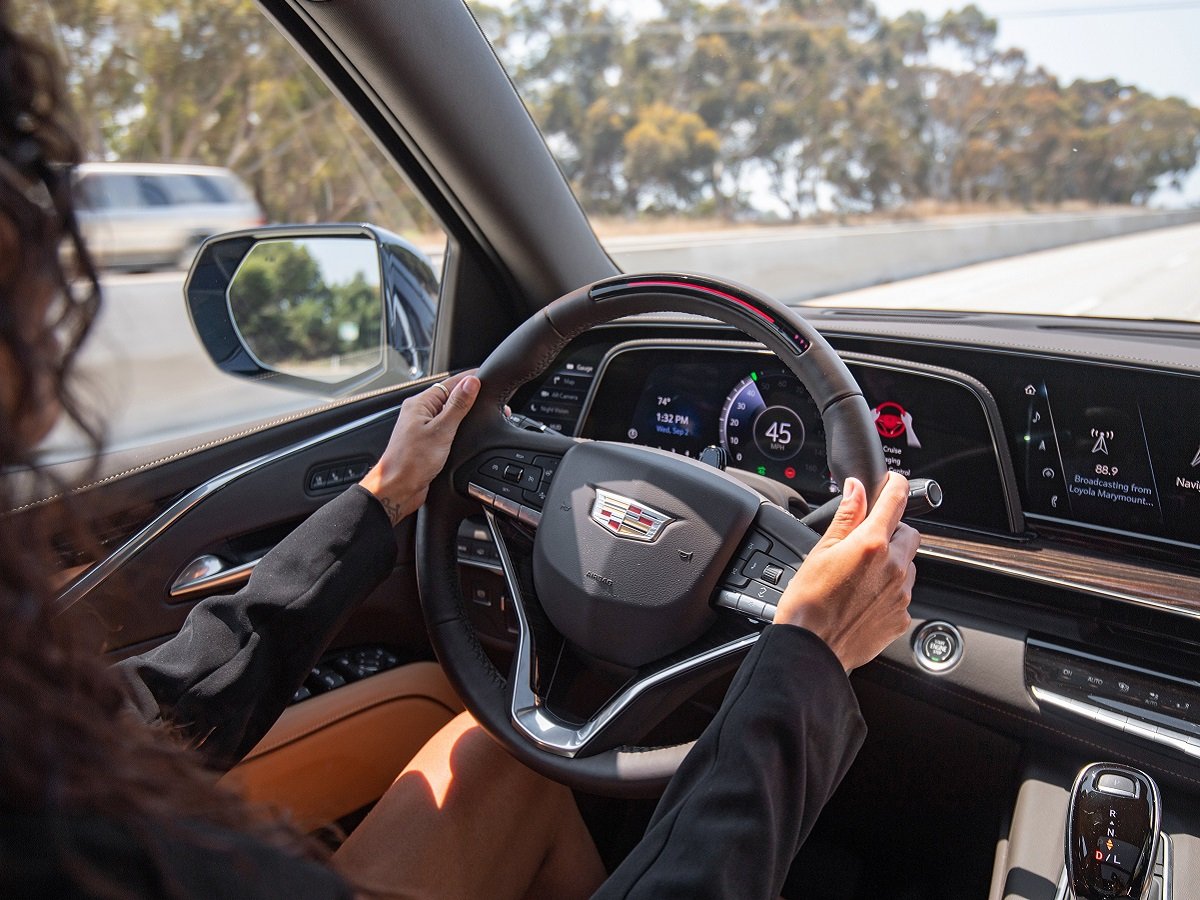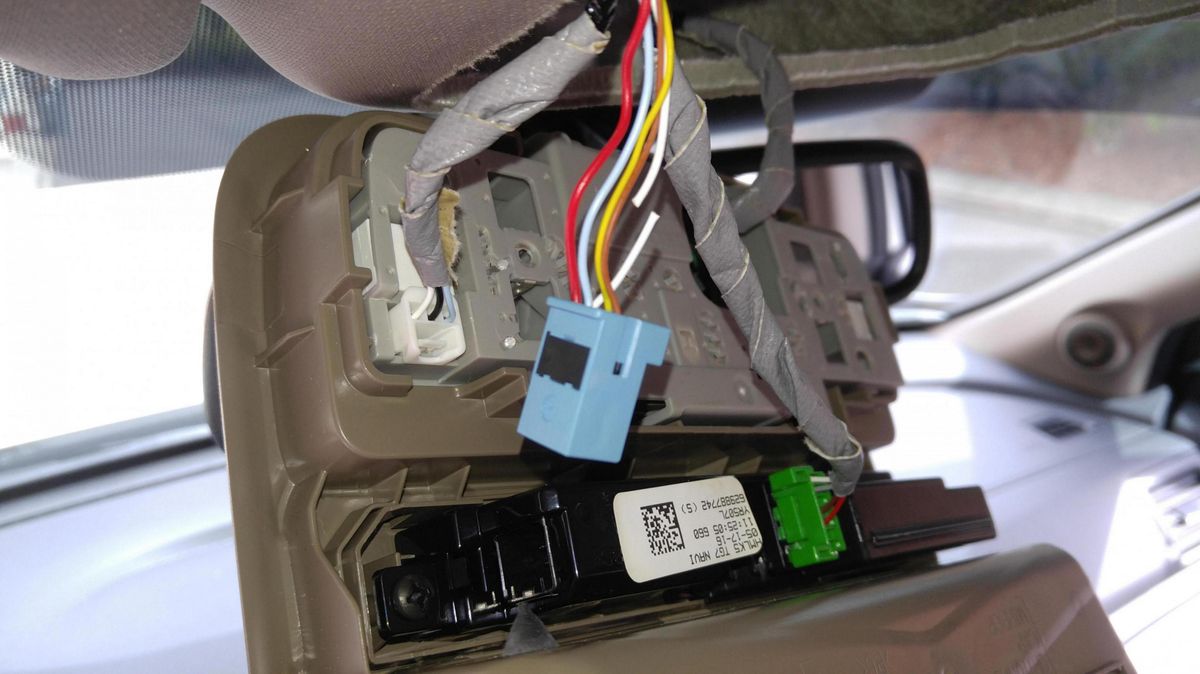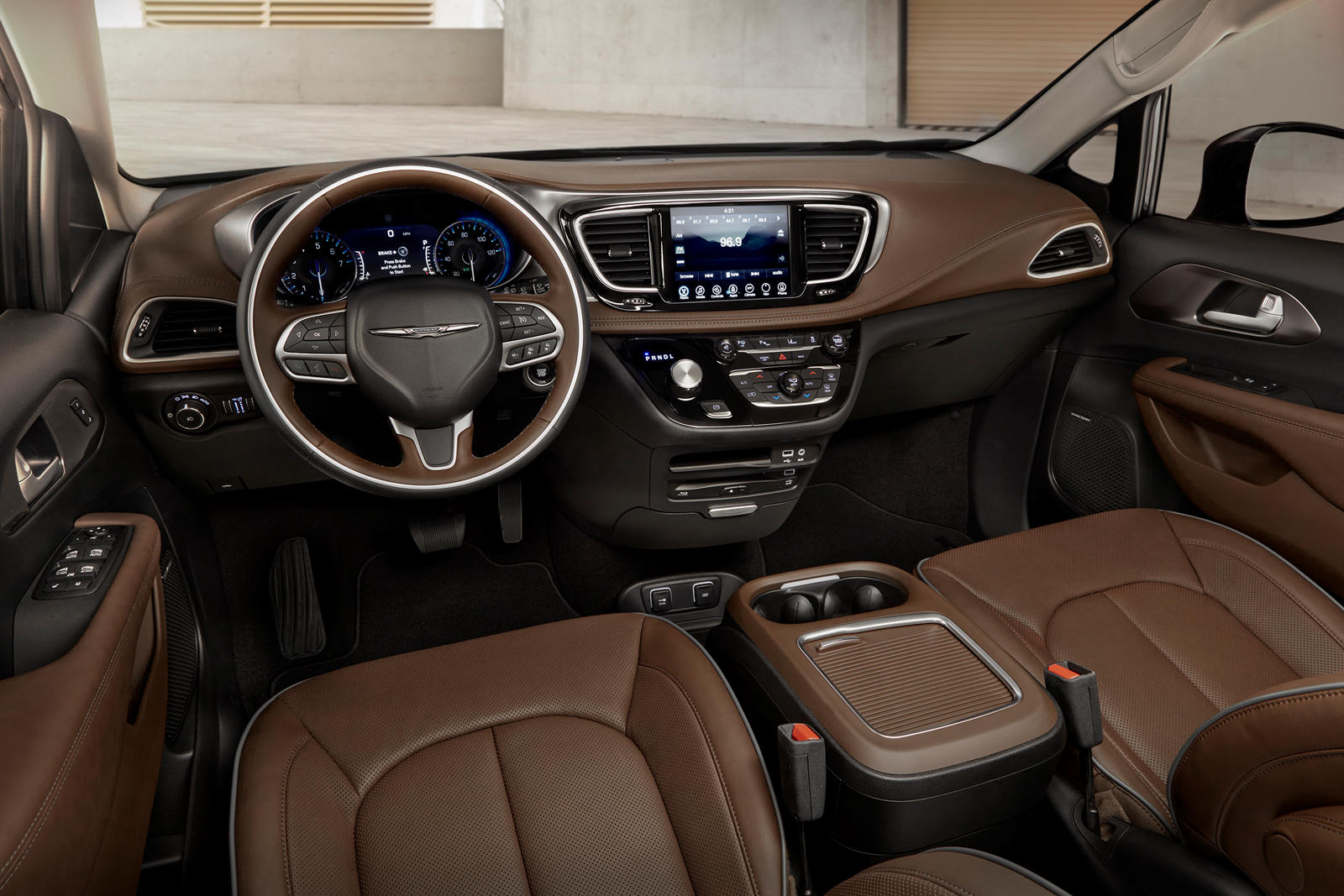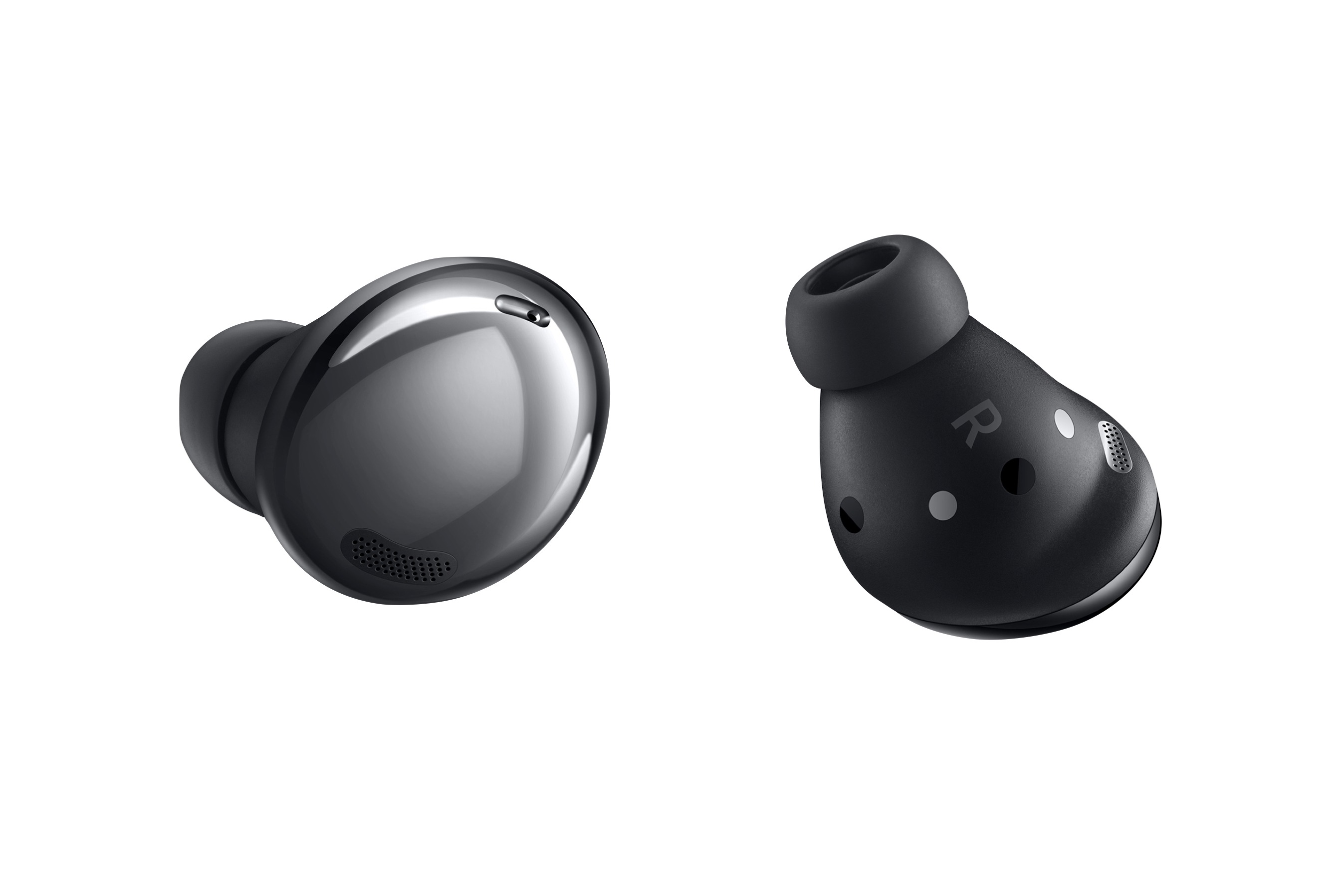Home>Production & Technology>Noise Cancellation>How Does Active Noise Cancellation In A Car Work


Noise Cancellation
How Does Active Noise Cancellation In A Car Work
Modified: January 26, 2024
Discover how noise cancellation technology works in cars, reducing unwanted sounds for a quieter and more enjoyable driving experience.
(Many of the links in this article redirect to a specific reviewed product. Your purchase of these products through affiliate links helps to generate commission for AudioLover.com, at no extra cost. Learn more)
Table of Contents
- Introduction
- Basic principles of active noise cancellation
- Active noise cancellation in car audio
- Active noise cancellation in engine compartments
- Active noise cancellation for road noise
- Active noise cancellation in cabin interiors
- Benefits of active noise cancellation in cars
- Limitations and challenges of active noise cancellation
- Future developments and advancements in active noise cancellation technology
- Conclusion
Introduction
Have you ever been on a road trip, enjoying the scenic views and your favorite music, only to be interrupted by the constant rumble of the engine and the noise from outside? If so, you’re not alone. The noise inside a car can be quite distracting and can hinder your overall driving experience. However, thanks to the advancement in technology, we now have a solution – active noise cancellation (ANC) in cars.
Active noise cancellation is a technique used to reduce unwanted sounds by producing an opposite sound wave that cancels out the noise. It is commonly used in headphones and earphones to provide a peaceful and immersive listening experience. However, this revolutionary technology has also made its way into cars, offering a serene and quiet environment for both the driver and passengers.
The basic principle behind active noise cancellation involves capturing the sound waves from the environment using microphones strategically placed inside the car. These microphones pick up the unwanted noises, such as engine noise, road noise, and wind noise, and send them to a digital signal processor (DSP). The DSP analyzes the incoming sounds and generates an opposite sound wave with the same amplitude but an inverted phase. This inverse sound wave is then played through the car’s audio system, effectively canceling out the original noise.
Active noise cancellation in cars goes beyond just canceling out the engine noise and external sounds. It also addresses other sources of noise, such as road noise and cabin interior noise. This technology plays a vital role in improving the overall driving experience, providing a peaceful and comfortable environment. Whether you’re on a long road trip or commuting in heavy traffic, active noise cancellation in cars can significantly reduce the distractions and enhance the enjoyment of your journey.
In the following sections, we will explore the different applications of active noise cancellation in cars, including car audio, engine compartments, road noise, and cabin interiors. We will also discuss the benefits, limitations, and future developments in this rapidly evolving field of technology.
Basic principles of active noise cancellation
Active noise cancellation is based on the principle of destructive interference, which means that two sound waves with opposite phases, when combined, will cancel each other out. In the context of active noise cancellation, this means that the unwanted noise inside a car can be reduced by generating an opposite sound wave that cancels out the noise.
The process of active noise cancellation begins with the use of microphones strategically placed inside the car to capture the ambient sounds. These microphones pick up the undesired noises, such as engine noise, wind noise, and road noise. The captured sounds are then sent to a digital signal processor (DSP), which analyzes and processes the signals.
The DSP uses advanced algorithms to identify the specific frequencies and patterns of the unwanted noise. Once identified, the DSP generates an opposite sound wave with the same amplitude but an inverted phase. This inverse sound wave is then played through the car’s audio system, creating a destructive interference with the original noise. As a result, the unwanted sounds are effectively canceled out, creating a quieter and more enjoyable environment in the car.
It’s important to note that active noise cancellation is most effective for low-frequency sounds, such as engine rumble and road noise. These low-frequency sounds are relatively easier to cancel out because they have longer wavelengths. Higher-frequency sounds, such as sharp noises or voices, are more difficult to cancel due to their shorter wavelengths.
Active noise cancellation can be implemented using two main techniques: feedforward and feedback. In the feedforward configuration, the microphones capture the sound from the environment before it reaches the occupants’ ears. This allows the system to generate the inverse sound wave in advance, canceling out the noise before it reaches the occupants. On the other hand, the feedback configuration captures the sound inside the cabin, near the occupants’ ears, and generates the inverse sound wave accordingly. Both configurations have their advantages and limitations, and car manufacturers choose the one that best suits their specific requirements.
Overall, the basic principles of active noise cancellation involve capturing the unwanted noise, analyzing the sound signals, and generating an opposite sound wave to cancel out the noise. This technology has revolutionized the driving experience, providing a quieter and more comfortable environment inside the car.
Active noise cancellation in car audio
When it comes to car audio systems, active noise cancellation plays a crucial role in delivering a high-quality and immersive audio experience. The primary goal of active noise cancellation in car audio is to minimize the interference of external noises, such as engine noise and road noise, and allow the occupants to enjoy clear and crisp music or audio content.
Car audio systems with active noise cancellation use a combination of advanced hardware and software technologies to achieve optimal sound quality. The system includes microphones strategically placed inside the car to capture the ambient sounds. These microphones pick up the unwanted noises, and the captured signals are sent to a digital signal processor (DSP) for analysis and processing.
The DSP uses sophisticated algorithms to identify the specific frequencies and patterns of the unwanted noise. Once identified, the DSP generates an opposite sound wave with the same amplitude but an inverted phase. This inverse sound wave is then played through the car’s speakers, effectively canceling out the original noise and providing a quieter listening experience.
Active noise cancellation in car audio systems not only enhances the clarity of the audio but also improves the overall audio dynamics. By reducing the interference of external noises, the system allows the occupants to hear subtle details and nuances in the music or audio content that would otherwise be masked by the background noise. This creates a more immersive and enjoyable audio experience, whether you’re listening to your favorite songs, podcasts, or audiobooks.
In addition to canceling out external noises, active noise cancellation in car audio systems can also compensate for the acoustic characteristics of the car’s interior. Each car has its unique acoustic profile, which may result in certain frequencies being amplified or attenuated. The active noise cancellation system can adjust the audio output to compensate for these acoustic variations, ensuring consistent sound quality throughout the car.
Car manufacturers are continuously investing in research and development to improve the active noise cancellation technology in car audio systems. They are exploring advanced noise cancellation algorithms, multiple microphones for precise sound capture, and adaptive systems that can dynamically adjust the cancellation settings based on the driving conditions and occupant preferences.
Overall, active noise cancellation in car audio systems provides a significant improvement in sound quality, allowing you to enjoy your favorite music and audio content without the interference of external noises. With advancements in technology, we can expect even more sophisticated and immersive audio experiences in the future.
Active noise cancellation in engine compartments
The engine compartment is one of the primary sources of noise in a car. The constant rumble and vibrations from the engine can be quite loud and can significantly impact the comfort and driving experience. To address this issue, active noise cancellation technology is employed in the engine compartments of modern cars.
Active noise cancellation in engine compartments works similarly to other applications of the technology. Microphones are strategically placed inside the engine compartment to capture the engine noise. These microphones pick up the sound waves generated by the engine and send them to a digital signal processor (DSP) for analysis.
The DSP analyzes the incoming signals and generates an opposite sound wave with the same amplitude but an inverted phase. This inverse sound wave is then emitted through speakers or transducers placed in the engine compartment. When the inverse sound wave combines with the original engine noise, destructive interference occurs, canceling out the unwanted sounds.
Active noise cancellation in engine compartments is particularly effective in reducing low-frequency engine noise, such as the rumble and vibrations from the combustion process. By canceling out these vibrations and rumblings, the overall noise level in the engine compartment is significantly reduced, resulting in a quieter and more pleasant driving experience.
In addition to reducing the noise inside the engine compartment, active noise cancellation can also improve vehicle efficiency. By reducing the engine noise, active noise cancellation allows for easier communication between the engine management system and sensors. This can result in better tuning and optimization of the engine performance, potentially leading to improved fuel efficiency and reduced emissions.
Furthermore, active noise cancellation in engine compartments can also contribute to thermal management. Excessive engine noise can increase the temperature in the engine compartment, impacting the overall cooling efficiency. By reducing the noise and vibrations, active noise cancellation helps to maintain optimal temperatures, improving the overall performance and longevity of the engine.
Car manufacturers are continuously exploring advancements in active noise cancellation technology for engine compartments. They are incorporating more sophisticated algorithms, multiple microphones for precise sound capture, and powerful speakers or transducers to effectively cancel out the engine noise.
Active noise cancellation in engine compartments not only enhances the driving experience by reducing noise but also contributes to better vehicle performance and efficiency. With ongoing advancements, we can expect even quieter and more efficient cars in the future.
Active noise cancellation for road noise
Road noise is a significant source of unwanted noise inside a car. The sound of tires rolling over the pavement, wind resistance, and vibrations can create a constant hum that can be quite distracting and fatiguing. To combat this, active noise cancellation technology is employed to reduce road noise and provide a more comfortable driving experience.
Active noise cancellation for road noise follows the same basic principles as in other applications. Microphones are strategically placed inside the car to capture the road noise. These microphones pick up the sound waves generated by the tires and the wind, and the captured signals are sent to a digital signal processor (DSP) for analysis and processing.
The DSP analyzes the incoming signals and generates an inverse sound wave with the same amplitude but an inverted phase. This inverse sound wave is then played through the car speakers, effectively canceling out the original noise. By doing so, active noise cancellation helps to reduce the overall level of road noise inside the car.
Active noise cancellation for road noise is particularly effective in reducing low-frequency rumbling sounds generated by the tires. These low-frequency sounds can be quite intrusive and can make the driving experience uncomfortable. By canceling out these sounds, active noise cancellation ensures a quieter and more serene environment inside the car.
In addition to reducing road noise, active noise cancellation can also contribute to improved audio clarity. By canceling out the external noise, the system allows for better distinction and clarity of audio content, such as music, phone calls, or navigation instructions. This leads to a more enjoyable and immersive in-car entertainment experience.
Car manufacturers are investing in research and development to improve active noise cancellation for road noise. They are incorporating advanced algorithms, multiple microphones positioned strategically inside the car, and adaptive systems that can adjust the cancellation settings based on the driving conditions and vehicle speed.
Active noise cancellation for road noise not only enhances the comfort of the driving experience but also contributes to reduced driver fatigue. By reducing the constant hum and vibrations caused by road noise, active noise cancellation creates a more relaxing and enjoyable environment in the car.
As technologies continue to evolve, we can expect further advancements in active noise cancellation for road noise, providing even more effective and tailored solutions to reduce unwanted noise and enhance the overall driving experience.
Active noise cancellation in cabin interiors
The cabin interior of a car is where we spend most of our time while driving. It is essential to create a quiet and comfortable environment to ensure a pleasant driving experience. Active noise cancellation technology in cabin interiors plays a crucial role in achieving this goal by reducing unwanted noise and improving overall cabin serenity.
Active noise cancellation in cabin interiors follows the same principles as other applications. Microphones strategically placed inside the cabin capture the sounds within the car, including internal vibrations, HVAC system noise, and the sound of other occupants or audio systems. These captured signals are then sent to a digital signal processor (DSP) for analysis and processing.
The DSP utilizes advanced algorithms to identify the specific frequencies and patterns of the unwanted noise. It then generates an opposite sound wave with the same amplitude but an inverted phase, which is played through the car’s audio system. This inverse sound wave effectively cancels out the original noise, resulting in a quieter and more peaceful cabin environment.
Active noise cancellation in cabin interiors focuses on reducing both low-frequency and high-frequency noises. Low-frequency noises, such as engine rumble or road noise, can be particularly intrusive and fatiguing. By canceling out these low-frequency noises, active noise cancellation helps create a more comfortable and enjoyable driving experience.
High-frequency noises, such as wind noise or the sound of other vehicles passing by, can also be disruptive inside the cabin. Active noise cancellation technology is adept at reducing these high-frequency noises, allowing for clearer communications, improved audio clarity, and a more serene cabin environment.
In addition to actively canceling out unwanted noise, active noise cancellation in cabin interiors can work in conjunction with other insulation and soundproofing materials. This combination helps further reduce external noise intrusion and enhances the overall acoustic performance of the cabin.
Car manufacturers are continuously investing in advancements in active noise cancellation for cabin interiors. They are exploring new microphone placement strategies, improved algorithms, and enhanced audio system integration to deliver the most effective noise reduction and attain optimal passenger comfort.
Active noise cancellation in cabin interiors offers a multitude of benefits, including reduced driver fatigue, improved audio clarity, and a more pleasant passenger experience. It allows occupants to enjoy a quiet and peaceful environment, making every ride more enjoyable and relaxing.
As active noise cancellation technology continues to evolve, we can expect more sophisticated and customized solutions tailored to individual cabin interiors, providing an even higher level of noise reduction and passenger comfort in the future.
Benefits of active noise cancellation in cars
Active noise cancellation technology in cars offers a range of benefits to both drivers and passengers, enhancing the overall driving experience and improving comfort. Let’s explore some of the key advantages:
- Reduced noise levels: One of the primary benefits of active noise cancellation is the reduction of unwanted noise inside the car. Whether it’s engine noise, road noise, or wind noise, active noise cancellation effectively cancels out these sounds, creating a quieter and more peaceful cabin environment.
- Improved audio quality: By reducing external noise interference, active noise cancellation enhances the clarity and quality of audio from the car’s audio system. Whether you’re listening to music, phone calls, or navigation instructions, active noise cancellation ensures a more immersive and enjoyable audio experience.
- Enhanced communication: Active noise cancellation helps improve communication within the car. By reducing ambient noise, it becomes easier for occupants to hear and understand each other, enhancing both safety and the overall social experience during car rides.
- Reduced driver fatigue: Excessive noise in the car can lead to driver fatigue over extended periods. With active noise cancellation, the constant rumble and vibrations from the engine and road are minimized, reducing driver stress and fatigue, and promoting a more relaxed and focused driving experience.
- Improved vehicle efficiency: Active noise cancellation can have a positive impact on vehicle efficiency. By reducing engine noise, the system allows for improved communication between the engine management system and sensors. This can result in better tuning and optimization of the engine performance, potentially leading to improved fuel efficiency and reduced emissions.
- Enhanced comfort and ride quality: Active noise cancellation contributes to a more comfortable and pleasant driving experience. By reducing unwanted noise, vibrations, and harshness, it creates a serene and peaceful cabin environment, allowing occupants to relax and enjoy the ride.
These benefits of active noise cancellation make driving a more enjoyable and stress-free experience. Car manufacturers continue to invest in this technology to provide passengers with the most comfortable and immersive driving environment possible.
Limitations and challenges of active noise cancellation
While active noise cancellation technology offers significant advantages, it also comes with a few limitations and challenges. It’s important to be aware of these factors when considering the implementation of active noise cancellation in cars.
- Effectiveness in certain frequency ranges: Active noise cancellation is most effective at cancelling out low-frequency noises, such as engine rumble and road noise. However, it may not be as effective at cancelling out higher-frequency sounds, like sharp noises or voices, due to their shorter wavelengths. This can limit the overall effectiveness of the technology in certain situations.
- Dependency on microphone placement: The placement of microphones inside the car plays a crucial role in capturing the desired noise for cancellation. Incorrect or suboptimal microphone placement can result in reduced effectiveness of active noise cancellation. Car manufacturers need to carefully design and position the microphones to ensure optimal performance.
- Ambient noise variations: The performance of active noise cancellation can vary depending on the driving conditions and external factors. Ambient noise levels, road surfaces, and wind conditions can all affect the overall effectiveness of the technology. Therefore, active noise cancellation may not provide consistent results in all driving scenarios.
- Battery consumption: Active noise cancellation systems require power to operate, and this can affect the overall battery consumption of the car. While advancements in energy efficiency have reduced the impact, it is still a consideration for car manufacturers as they balance the benefits of active noise cancellation against the power requirements.
- Cost and complexity: Implementing active noise cancellation in cars can be a complex and costly process. It requires the integration of microphones, digital signal processors (DSPs), and speakers or transducers. Car manufacturers need to weigh the benefits against the added costs and complexity involved in implementing the technology in their vehicles.
Despite these limitations and challenges, active noise cancellation technology continues to evolve and improve. Car manufacturers are investing in research and development to overcome these limitations and provide effective and efficient active noise cancellation systems in their vehicles.
It’s important to consider these factors and evaluate the specific needs and requirements before deciding to incorporate active noise cancellation technology in cars. The technology can offer significant benefits, but it’s essential to understand its limitations as well.
Future developments and advancements in active noise cancellation technology
Active noise cancellation technology in cars is continuously evolving, with ongoing research and development aimed at improving its effectiveness and capabilities. Here are some anticipated future developments and advancements in active noise cancellation technology:
- Improved algorithms: Advances in signal processing algorithms will enhance the performance and accuracy of active noise cancellation systems. These algorithms will be more efficient in identifying and cancelling specific frequencies and patterns of noise, resulting in even better noise reduction.
- Multichannel active noise cancellation: Implementing multichannel active noise cancellation will allow for more precise cancellation of noise from different directions. By strategically placing multiple microphones and speakers throughout the car, noise cancellation can be targeted and optimized based on the location of the noise source.
- Adaptive and personalized cancellation: Future active noise cancellation systems may incorporate adaptive and personalized cancellation features. These systems will automatically adjust the cancellation settings based on the specific noise environment and the preferences of individual occupants. This will provide a more customized and tailored noise cancellation experience.
- Integration with other vehicle systems: Active noise cancellation technology is likely to be integrated more seamlessly with other vehicle systems. This integration can include collaboration with the onboard infotainment system, voice-controlled assistants, and advanced driver-assistance systems (ADAS). These integrations will enable a more holistic and intelligent approach to noise cancellation within the car.
- Active interior noise compensation: Active noise cancellation systems will not only cancel out unwanted external noise but also compensate for interior noise. This will include canceling out noise generated by HVAC systems, seat movements, or other mechanical components within the car, further improving the cabin’s overall serenity.
- Advancements in materials and insulation: The development of innovative materials and insulation techniques will contribute to reducing external noise and enhancing the effectiveness of active noise cancellation. These advancements will help create a quieter and more comfortable cabin environment.
These advancements in active noise cancellation technology will provide more efficient, effective, and tailored solutions to reduce unwanted noise in cars. They will significantly enhance the driving experience, promote better communication, and provide a more serene environment for occupants.
As car manufacturers continue to invest in research and development, we can expect active noise cancellation systems to become more prevalent and advanced in future vehicle models. The ongoing advancements in technology will bring us even closer to achieving a truly quiet and immersive driving experience.
Conclusion
Active noise cancellation technology has revolutionized the driving experience by reducing unwanted noise and creating a quieter and more comfortable environment inside cars. By employing sophisticated algorithms, microphones, and digital signal processors, active noise cancellation effectively cancels out engine noise, road noise, wind noise, and other unwanted sounds.
The benefits of active noise cancellation are manifold. It improves audio quality, enhances communication, reduces driver fatigue, and contributes to a more enjoyable and serene driving experience. With advancements in technology, such as improved algorithms, multichannel cancellation, and adaptive systems, active noise cancellation will continue to provide even better performance and customization in the future.
However, active noise cancellation technology also has its limitations and challenges. It may not be as effective for higher-frequency noises, relies on optimal microphone placement, and requires power consumption. It is important to consider these factors when implementing active noise cancellation in cars.
Nevertheless, car manufacturers are committed to advancing active noise cancellation technology. With ongoing research and development, we can expect further improvements, such as adaptive cancellation, integration with other vehicle systems, and advancements in materials and insulation.
In conclusion, active noise cancellation technology has significantly enhanced the driving experience by reducing unwanted noise and contributing to a more peaceful and comfortable cabin environment. With continued advancements, active noise cancellation will continue to evolve, providing cars with greater serenity and offering occupants a more enjoyable journey.











